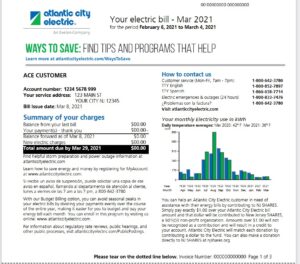Electricity Load Factor Calculator
Find how to figure out the load factor for commercial electricity with our load factor calculator this energy tool will help you quickly figure out what your load factor is instantly.
How to improve load factor
- Reduce your electricity usage during peak load days and times.
- Good load factors are above 50% and bad load factors are below 30%.
- Seasonal businesses have bad load factors from a bad load profile.
- Click Here Learn More...

What is an electricity load factor?
Electricity load factor is a measure of how efficiently a business is using its electricity. It is the ratio of the actual electricity used by a business over a given period of time, to the maximum amount of electricity that could have been used over the same period of time, if the business had operated at full capacity during that time. Load factor is expressed as a percentage, and a higher load factor indicates a more efficient use of electricity.
To illustrate suppose a business uses 10,000 kilowatt-hours (kWh) of electricity in a month and its maximum possible usage during that time period based on its equipment and operating hours is 20,000 kWh. The load factor for that month would be 50% (10,000 kWh / 20,000 kWh). This means that the business is using electricity at only half its full capacity during that period which indicates an inefficient use of energy.
A business can lower its load factor by reducing the difference between the actual energy used and its maximum potential energy usage. One way to achieve this is by shifting some of its operations to off-peak hours when electricity rates are lower. For example a business that operates a manufacturing plant could run some of its heavy machinery during the night when electricity rates are typically lower which would reduce its peak electricity demand and improve its load factor.
Another way to lower a business's load factor is by improving the energy efficiency of its equipment and processes. For example replacing older less efficient equipment with newer more efficient models could reduce energy consumption and improve the load factor. Similarly upgrading lighting systems to more energy efficient options or implementing energy saving measures like adding insulation can also lower a business's load factor.
Improving the load factor of a business is important for a number of reasons. First it can help reduce electricity bills since some utilities charge a higher rate for businesses with lower load factors. Additionally improving energy efficiency can help a business become more sustainable which can be an attractive selling point for environmentally conscious customers. Finally reducing energy consumption can help a business reduce its carbon footprint, which is becoming increasingly important as more and more consumers are looking for sustainable businesses to support.
A business can lower its load factor by reducing the difference between its actual energy usage and its maximum potential energy usage. This can be achieved by shifting some operations to off peak hours improving the energy efficiency of equipment and processes and implementing energy saving measures. Improving a business's load factor can result in lower electricity bills improved sustainability, and a reduced carbon footprint.
